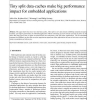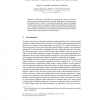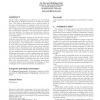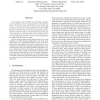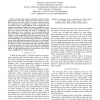JEC
2006
13 years 9 months ago
2006
This paper shows that even very small data caches, when split to serve data streams exhibiting temporal and spatial localities, can improve performance of embedded applications wit...
SAMOS
2005
Springer
14 years 2 months ago
2005
Springer
In this paper, we introduce the concept of flux caches envisioned to improve processor performance by dynamically changing the cache organization and implementation. Contrary to t...
VALUETOOLS
2006
ACM
14 years 3 months ago
2006
ACM
Cache locality optimization is an efficient way for reducing the idle time of modern processors in waiting for needed data. This kind of optimization can be achieved either on the...
IPPS
2006
IEEE
14 years 3 months ago
2006
IEEE
Chip multiprocessors (CMPs) are becoming a popular way of exploiting ever-increasing number of on-chip transistors. At the same time, the location of data on the chip can play a c...
DATE
2009
IEEE
14 years 4 months ago
2009
IEEE
Abstract—Caches often employ write-back instead of writethrough, since write-back avoids unnecessary transfers for multiple writes to the same block. For several reasons, however...
